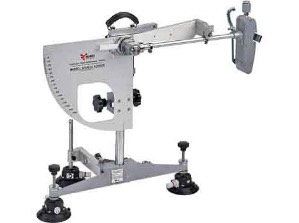Slips and falls are among the most common accidents worldwide, leading to injuries that range from minor bruises to severe fractures. To counteract this issue, slip resistance testing has emerged as a crucial preventive measure, particularly in environments where foot traffic is high.
About Slip Resistance
Slip resistance refers to the level of friction between a person’s footwear and a walking surface. Surfaces with low slip resistance are more likely to cause accidents when exposed to moisture or contaminants. Slip resistance testing assesses the coefficient of friction, which determines how effectively a surface can resist slipping.
Importance of Slip Resistance Testing
Slip resistance testing is pivotal in identifying potential hazards before they lead to accidents. By determining the coefficient of friction, experts can evaluate whether a surface is safe for various conditions and activities. This testing aids in selecting appropriate flooring materials and designing spaces that prioritize safety.
Common Testing Methods
Wet Pendulum Test
The wet pendulum test simulates walking on a wet surface. It measures the dynamic coefficient of friction, helping experts gauge slipperiness.
Coefficient of Friction Testing
This method quantifies the force required to move an object across a surface. A higher coefficient of friction indicates better slip resistance.
Tortus Test
The tortus test evaluates both static and dynamic friction. It provides valuable insights into a surface’s slip resistance under various conditions.
Standards and Regulations
Various organizations, such as the ASTM and ISO, have established standards for slip resistance testing. Adhering to these guidelines ensures consistent and accurate testing practices.
Industries that Benefit from Slip Resistance Testing
Slip resistance testing finds applications across industries:
- Manufacturing: Prevents accidents in production areas.
- Healthcare: Ensures safety for patients and staff.
- Retail: Reduces the risk of customer injuries.
- Hospitality: Enhances customer experience in hotels and restaurants.
Educational Institutions and Slip Resistance
Slip resistance testing ensures the safety of students, teachers, and staff. It minimizes accidents in school premises and playgrounds.
Workplaces and Employee Safety
Employers can enhance workplace safety through slip resistance testing. This protects employees from accidents, reduces downtime, and improves overall productivity.
Hospitality Sector and Customer Well-being
In the hospitality industry, slip resistance testing plays a vital role in creating a safe and pleasant experience for guests. It prevents accidents in high-traffic areas such as lobbies, restaurants, and pool decks.
Outdoor Environments and Public Safety
Sidewalks, parks, and other public spaces benefit from slip resistance testing, reducing the risk of accidents caused by wet or uneven surfaces.
About Pendulum test
The pendulum test is a widely recognized method for assessing the slip resistance of various surfaces. From pedestrian walkways to kitchen floors, understanding how this test works can provide valuable insights into preventing slip and fall accidents.
How Does the Pendulum Test Work
The pendulum test mimics the action of a foot slipping on a surface. It involves a pendulum with a rubber slider that swings across a sample surface. The pendulum’s movement is recorded, and the friction generated by the rubber slider is measured. This measurement provides a coefficient of friction, which indicates the surface’s slip resistance.
Advantages of the Pendulum Test
The pendulum test offers several advantages:
- Realism: It simulates actual walking conditions, leading to realistic results.
- Versatility: It can be used on various surfaces, both indoors and outdoors.
- Immediate Results: The test provides quick feedback on a surface’s slip resistance.
- Cost-Effectiveness: It helps identify potential hazards before accidents occur, saving on potential costs.















